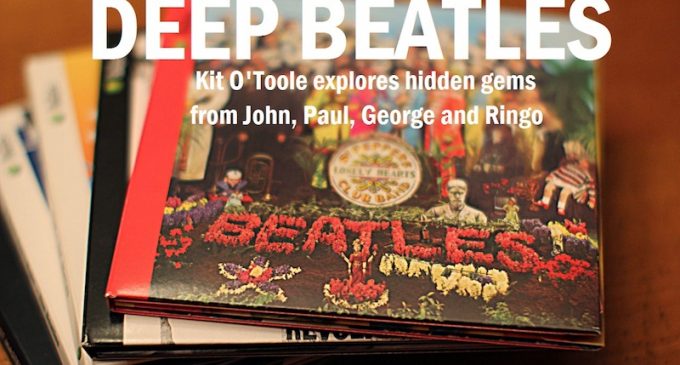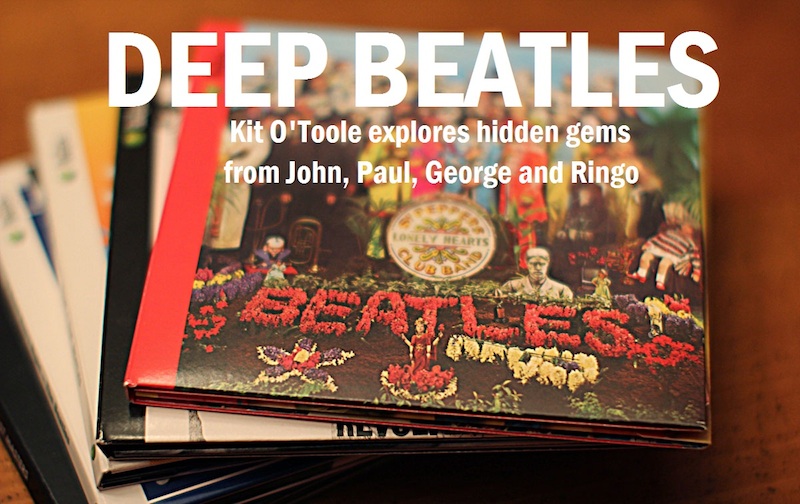The Beatles, “One After 909” from ‘Anthology 1’ (1995): Deep Beatles

by Kit O’Toole
The final entry in Deep Beatles’ “early songs” series spotlights a track that ranks among their best-known and oldest compositions. Written by John Lennon (with probable assistance from Paul McCartney) when he a teenager, “One After 909” reflects his earliest influences, namely skiffle and rock.In one of his final interviews, Lennon discussed the song’s origins and numeric relevance. “That was something I wrote when I was about 17,” he said. “I lived at 9 Newcastle Road. I was born on the ninth of October – the ninth month. It’s just a number that follows me around, but numerologically, apparently I’m a number six or a three or something, but it’s all part of nine.” During his 1970 Rolling Stone interview, he described the writing process in less abstract terms. “The ‘One After 909,’ on the Let It Be LP, I wrote when I was 17 or 18. We always wrote separately, but we wrote together because we enjoyed it a lot sometimes, and also because they would say well, you’re going to make an album get together and knock off a few songs, just like a job.”In Many Years from Now, McCartney told author Barry Miles that “One After 909” represented an attempt to write a “bluesy freight-train song” like “Midnight Special” or “Rock Island Line.” During the 1969 Get Back sessions, McCartney further discussed the song. “One of the first songs we’d ever done. We all used to sag off every school day, you know, and go back to my house. And the two of us would just sit there and write, ‘Love Me Do’ and ‘Too Bad About Sorrows.’ And there’s a lot from then, about 100 songs from then that we never reckoned. ‘Cuz they were all very unsophisticated songs, but they’re great, you know. We always hated the words of ‘One After 909.’”In the Beatles Encyclopedia, Kenneth Womack posits that Lennon and McCartney wrote the song at the latter’s Forthllin Rd. home in the late 1950s; while Lennon later claimed he was the sole composer, it’s more than likely that McCartney assisted to some degree.
By 1960, the Beatles (nee Quarrymen) included “One After 909” in their sets; one bootleg version can be heard in the Anthology documentary. In addition, 1962 audio exists of the Beatles rehearsing the song twice at the Cavern. One year later, the Beatles were at Abbey Road Studios recording their newest single “From Me To You” and its b-side, “Thank You Girl.” Next the group resurrected “One After 909,” laying down four takes and, according to the Beatles Bible, an edit piece that lasted from the guitar solo until the ending. They labored through the session, with McCartney struggling to keep up on bass, George Harrison flubbing the guitar solo, and Lennon sounding increasingly frustrated and missing cues. Takes three and four finally surfaced on 1995’s Anthology 1; a complete version of the song was created by combining takes four and five.
The Beatles set aside “One After 909” until 1969, when they tackled the song once more during the Get Back sessions. Featuring Billy Preston on electric piano, the song was recorded numerous times from January 28-30. With the addition of Preston, the song took on an R&B flavor in addition to old fashioned rock and roll; the track was then included as part of the rooftop concert on January 30. Phil Spector remixed the track, which ultimately appeared on Let It Be. The original mix, sans Spector, surfaced on 2003’s Let It Be … Naked.
In comparing the versions, the Let It Be rendition sounds looser than the 1963 version. Since “One After 909” was recorded live in concert, in effect, the vocals are not perfect. When Lennon and McCartney harmonize on the line “I begged her not to go and I begged her on my bended knees,” the latter’s voice suddenly drops out, only to rejoin Lennon on the words “begged her.” These imperfections enhance the song’s straight-ahead rock sound, one that harkens back slightly to rockabilly and the Sun Studio sound.
After the guitar solo, Lennon sings alone; when he utters the line “run right home,” McCartney enthusiastically yells “run right home!” as if to egg him on. Harrison’s guitar solo is, not surprisingly, a vast improvement over the 1963 attempt. Preston’s gospel-tinged electric piano lends a soulful edge, giving the 1969 rendition added punch and soul. As usual, Ringo Starr lays down a flawless and subtle beat with tasteful fills. When Lennon suddenly launches into “Danny Boy” at the end, one senses that the group had just undertaken a journey back to their childhood and musical roots.
Source: The Beatles, “One After 909” from ‘Anthology 1’ (1995): Deep Beatles




There are no comments at the moment, do you want to add one?
Write a comment